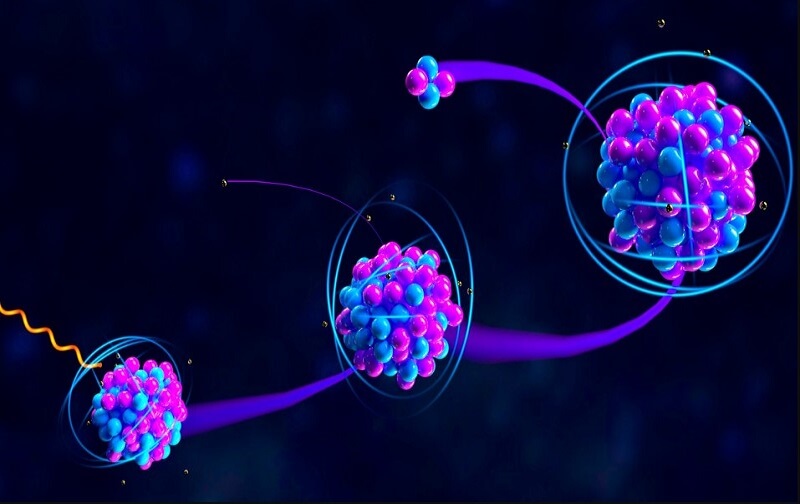
Types and Health Risks of Non-ionizing Radiations
Radiation, as we all know, is the process of energy traveling through two mediums. It can be in the form of waves or particles. Radiation exists in two forms i-e nature-made and man-made. The source of natural radiation is the Sun, radon is found in the air, rocks, soil, and outer space. The other form of radiation i-e man-made radiation is artificially made by people for various purposes such as research, medicine, communication, creation of weapons, energy needs, and so on. Radiation is an effective way to treat cancer, however, only professionals should be allowed to use it in a monitored environment. A small mishandling here and there can result in dire consequences. In this article, we shall discuss types of radiation i-e ionizing vs non-ionizing radiation.
Ionizing radiation
Ionizing radiation is the process of imparting energy by creating ions using the technique of electron removal from an atom. Radiations such as alpha, beta, gamma, x-rays, and neutrons have their source in radioactive materials. These forms of radiation are more hazardous as compared to non-ionizing radiations because of the higher amounts of energy particles. Prolonged exposure to ionizing radiation is harmful to all living things.
Non-ionizing radiation
Compared to ionizing radiation, non-ionizing radiation is less hazardous. In this form of radiation, electrons are not removed instead molecules simply move in an atom which results in the production of less energy. Some examples of non-ionizing radiation include microwaves, UV light, radio waves, infrared waves, radar waves, and electromagnetic radiation.
Ionizing VS non-ionizing radiations Health Risks
As there are different types of radiation therefore their effect on health varies. Furthermore, their impact varies based on the duration of exposure to the radiation. Another factor that contributes to their effect on health is the way they interact with living things. For example, direct exposure has a more hazardous consequence as compared to indirect contact. You can have a fair idea about the exposure based on the intensity, proximity, and duration of the radiation with the living things.
The first intense radiation exposure is when someone experiences sickness, nausea, or vomiting. This is followed by a lull period where no new symptoms are apparent however this results in fever, diarrhea, and headaches along with weakness, fatigue, dizziness, low blood pressure, blood in stool, disorientation, hair loss, infection, and reduced healing of wounds. A severe exposure of 8-10 Gy might even result in death.
Non-Ionizing Radiation in the Workplace
Although non-ionizing radiation has a reduced health risk, it cannot be claimed that it is safe to have this kind of radiation around you. Their use must be controlled and monitored if cannot be eliminated. Electric and magnetic field exposure resulting from MRI, cellular devices, radar traffic devices, wireless communications, and radio transmissions can have dire consequences on the health of people who have exposure to these radiations. This can affect the reproductive system and also have neurological impacts. Non-ionizing radiation is not as hazardous as ionizing radiation because they do not penetrate deep into the skin. As they remain at the top layer of skin, they majorly cause allergy and damage to skin or eyes. A prolonged and intense direct exposure, however, can cause serious health issues.
Types of non-ionizing radiations
1. Radiofrequency and Microwave Radiation
Radio emitters and cell phones are the major sources of radio waves. Being short wavelength radiation, microwave radiations do not get too deep into the human body, whereas, radio waves can travel much more so that a body absorbs them. An increased amount of both radiations can damage body tissues significantly.
2. Visible Light Radiation
Various radiations of the electromagnetic spectrum can be seen through the naked eye. Some of these visible-light radiations can be highly damaging to the eyes and skin.
3. Low-Frequency Radiation
Some applications such as power lines and electrical tools produce extremely low-frequency radiations which do not go beyond 60 HZ. ELF-induction furnaces and high-voltage power lines are other major sources of generating low-frequency radiations.
4. Lasers
There are various kinds of lasers. These include helium-neon, ruby visible lasers, and the Nitrogen UV laser. All of these lasers emit UV visible light. Lasers, in all their forms, are a serious health hazard.
5. Ultraviolet Radiation
The major source of ultraviolet radiation is the sun, welding arcs, black lights, and UV lasers. They possess a high photon energy range and are extremely hazardous to health. They do not exhibit any obvious symptoms even when the exposure is intense.
6. Infrared Radiation
This is the most detrimental kind of non-ionizing radiation vs ionizing radiation because the skin and eyes can absorb these radiations just like they can absorb heat. People who work near IR lasers, furnaces, or heat sources are more at risk of getting affected by this.
Final Words:
With the help of professional services such as Acc Env, you can determine the level of ionizing vs non-ionizing radiations in any space. It is important to know the presence of these radiations so that appropriate measures can be taken. Acc Env can also conduct a thorough residential indoor air quality testing to make your breathing space safer. To know more about our services, visit the services page.
